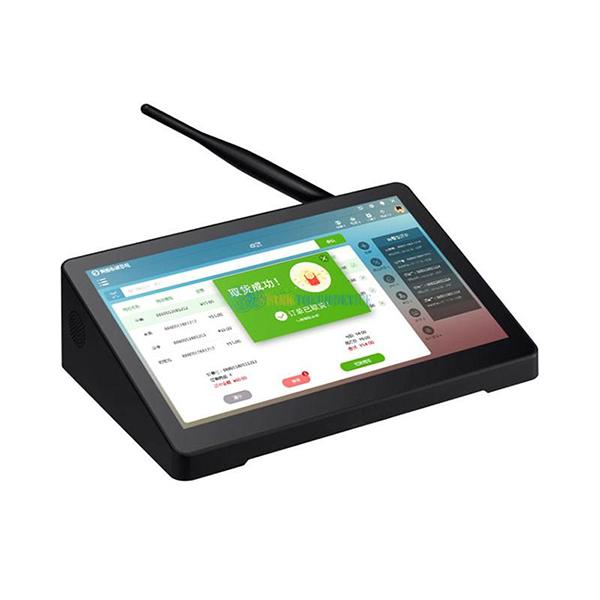Welcome STARK TOUCH DEVICE!
Solutions
Energy-saving mode Settings for industrial control computers during idle periods
Optimizing Energy Efficiency: Configuring Power-Saving Modes for Idle Industrial Control Computers
Industrial control computers (ICCs) often operate in environments where they remain powered on but idle during non-production hours, maintenance windows, or shift changes. Implementing energy-saving modes during these periods reduces electricity costs, minimizes wear on hardware components, and aligns with sustainability goals. Below is a structured approach to configuring and managing power-saving settings for ICCs in industrial settings.

Understanding Idle States and Power Management
Before adjusting settings, it’s essential to distinguish between different idle states and their impact on system performance. Industrial control computers may enter low-power modes automatically or require manual configuration, depending on the operating system and hardware capabilities.
Identifying Idle Scenarios
Non-Production Hours: Machines are powered on but not actively processing control tasks.
Maintenance Modes: Systems are idle during software updates, hardware inspections, or calibration.
Shift Transitions: Temporary downtime between operator shifts or production batches.
Each scenario demands tailored power-saving strategies to balance energy efficiency with rapid responsiveness when systems resume active duty.
Power States and Their Implications
Active Mode: Full power consumption, suitable for real-time control tasks.
Sleep Mode: Reduces power usage by suspending non-essential processes, with quick wake-up times.
Hibernate Mode: Saves system state to disk and powers down completely, ideal for extended idle periods.
Hybrid Sleep: Combines sleep and hibernate features, offering both energy savings and fast recovery.
Choosing the right mode depends on how frequently the ICC needs to resume operations and the acceptable delay during wake-up.
Configuring Power-Saving Settings in Industrial Environments
Most modern industrial control computers support configurable power plans through their operating systems. These settings allow administrators to define behavior during idle periods without compromising mission-critical functions.
Accessing Power Management Tools
Windows-Based Systems: Navigate to “Control Panel” > “Hardware and Sound” > “Power Options.” Select a balanced or power-saving plan and customize advanced settings.
Linux-Based Systems: Use terminal commands like
powertopor edit configuration files in/etc/to adjust CPU scaling, device power states, and wake-up triggers.
Ensure that changes do not interfere with real-time control applications, which may require consistent power delivery.
Customizing Sleep and Hibernate Thresholds
Sleep After: Set a timeout (e.g., 15–30 minutes) for the system to enter sleep mode when no user input or control tasks are detected.
Hibernate After: Configure a longer timeout (e.g., 1–2 hours) for scenarios where extended downtime is expected.
Wake Timers: Disable unnecessary wake-up events (e.g., scheduled maintenance tasks) to prevent unintended power-ons.
Test these settings during non-critical periods to verify that the ICC wakes up reliably when needed.
Managing Peripheral Devices
USB and Network Ports: Enable selective suspend for non-essential peripherals to reduce power draw.
Monitors and Displays: Set screen timeouts (e.g., 5–10 minutes) for attached displays, ensuring they do not interfere with alarm notifications.
Storage Drives: Configure hard drives to spin down after periods of inactivity, but avoid this for drives hosting real-time data logs.
Advanced Techniques for Industrial-Grade Energy Savings
Beyond basic power plans, industrial environments can leverage specialized features to enhance energy efficiency without sacrificing reliability.
Utilizing Wake-on-LAN for Remote Management
Purpose: Allows administrators to power on or wake ICCs remotely via network commands, eliminating the need for constant power.
Configuration: Enable Wake-on-LAN in BIOS settings and configure network adapters to respond to magic packets.
Security: Restrict Wake-on-LAN access to authorized IP ranges to prevent unauthorized power-ons.
This feature is particularly useful for centralized management of multiple ICCs across a factory floor.
Implementing Time-Based Power Policies
Scheduled Shutdowns: Use task schedulers (e.g., Windows Task Scheduler or cron jobs on Linux) to power down ICCs during known idle periods, such as weekends or holidays.
Automated Wake-Up: Combine scheduled shutdowns with Wake-on-LAN to bring systems back online before production resumes.
Ensure that time zones and daylight saving adjustments are accounted for to prevent premature shutdowns.
Monitoring and Adjusting Based on Usage Patterns
Energy Logs: Use built-in tools (e.g., Windows Energy Report or
powertopon Linux) to analyze power consumption trends and identify optimization opportunities.Adaptive Policies: Adjust timeout thresholds based on seasonal production schedules or shift patterns. For example, shorten sleep delays during peak seasons and extend them during low-demand periods.
Regular reviews of energy logs help refine settings over time, ensuring they align with evolving operational needs.
Balancing Energy Savings with Operational Readiness
While energy efficiency is a priority, industrial control computers must remain ready to resume critical functions at a moment’s notice.
Testing Wake-Up Reliability
Simulated Failures: Manually trigger sleep and hibernate modes, then verify that the ICC wakes up correctly and resumes control tasks without errors.
Network Dependency: If using Wake-on-LAN, test the feature during network outages to ensure fallback procedures (e.g., local manual power-ons) are in place.
Maintaining Real-Time Performance
CPU Governors: On Linux systems, configure CPU scaling governors (e.g.,
performancefor active tasks,powersavefor idle) to prevent throttling during wake-up.Memory Management: Ensure that hibernation files are stored on reliable drives to avoid corruption during power cycles.
Documentation and Training
Standard Operating Procedures (SOPs): Document power-saving configurations and wake-up procedures for operators and IT staff.
Training Sessions: Conduct regular training to familiarize teams with energy-saving features and troubleshooting steps for common issues.
By following these guidelines, industrial facilities can achieve significant energy savings while maintaining the reliability and responsiveness of their control systems.


